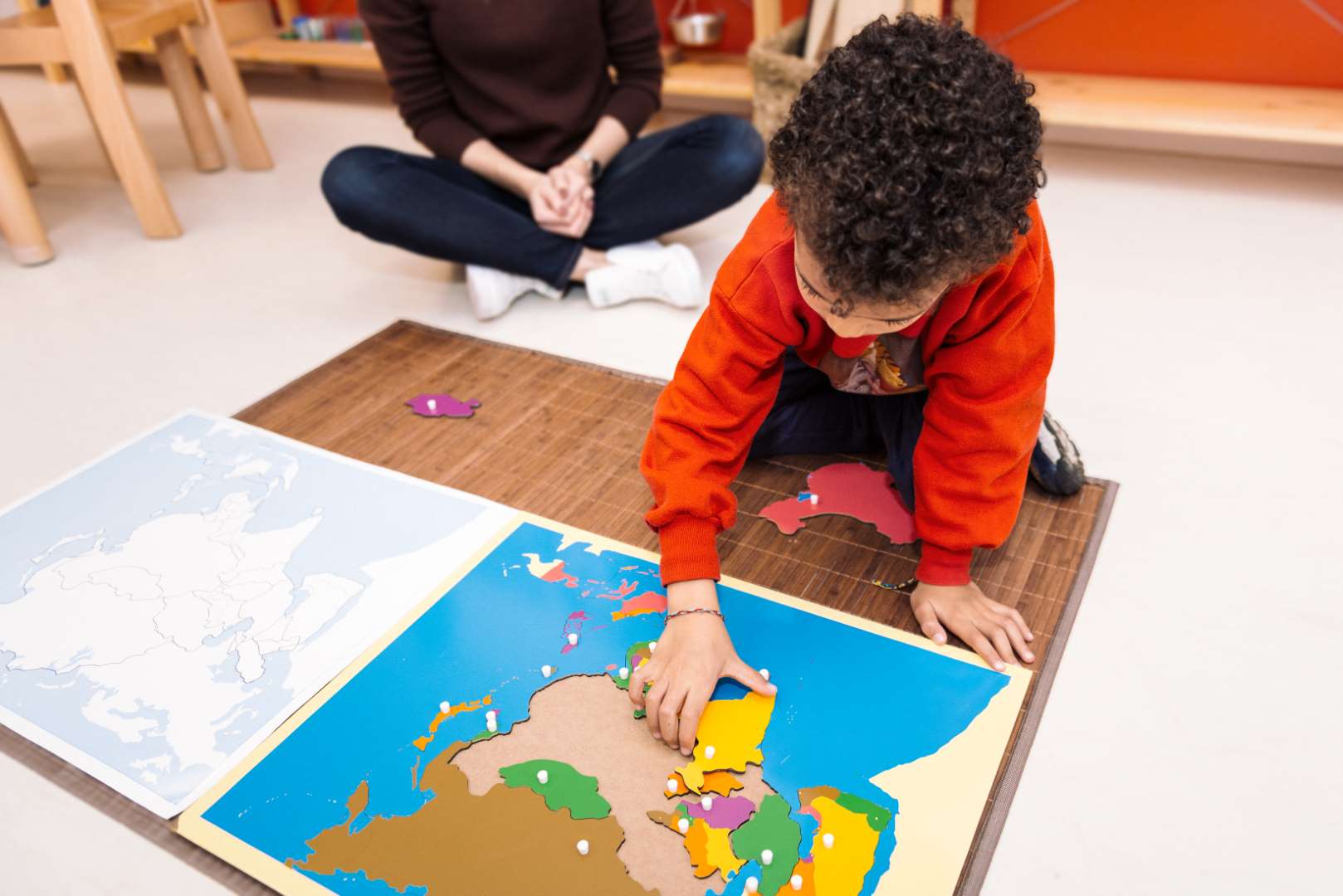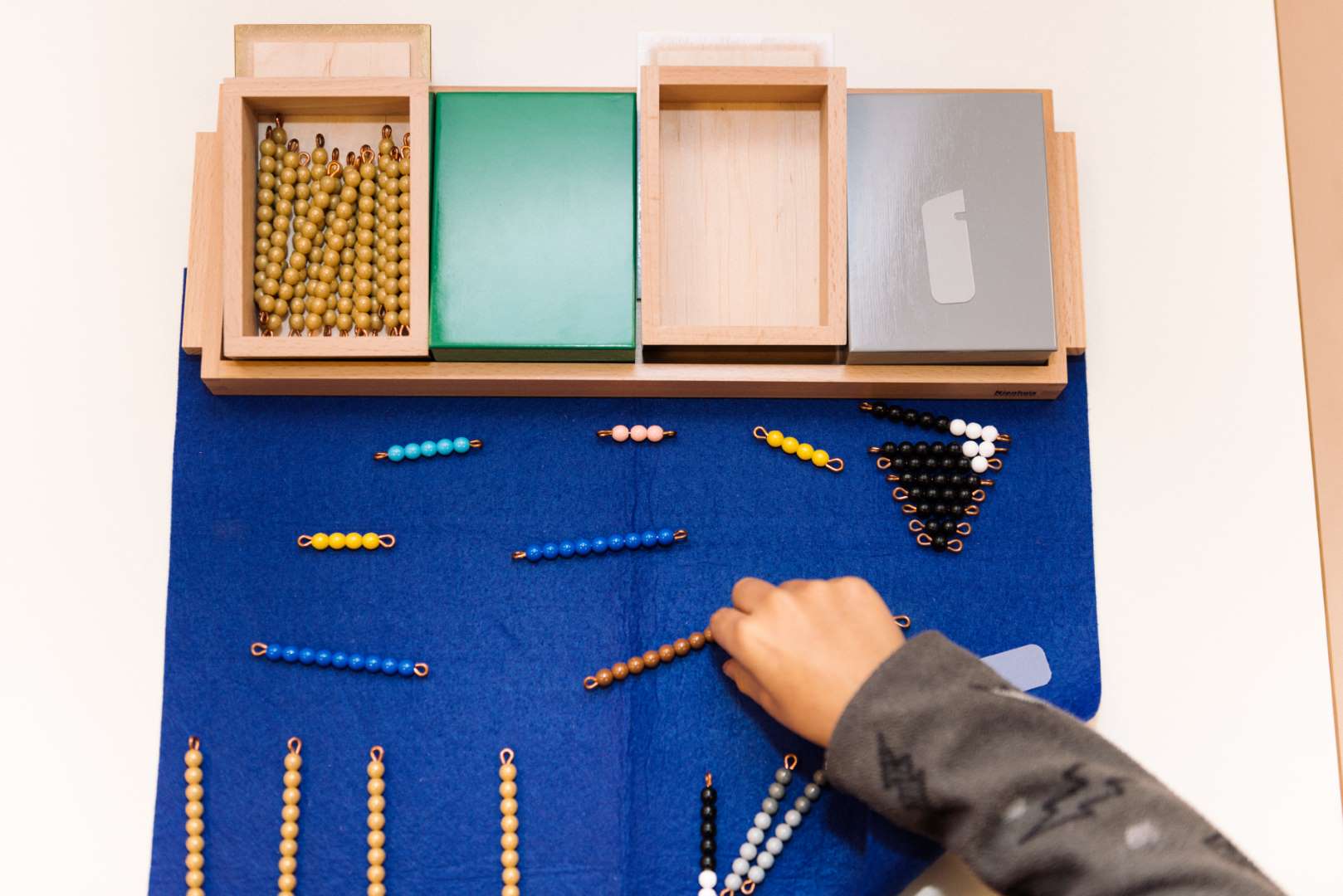For our independent workshops, we primarily use materials inspired by the Montessori method. This choice reflects our commitment to providing educational tools that are both suitable and stimulating for each child’s development.
To help you better understand the purpose and unique features of these materials, we are eager to present their functionalities and the benefits they bring to daily learning.
Montessori materials are a set of objects designed by Maria Montessori to stimulate a child’s senses and develop intelligence. They allow the child to progress from the concrete (e.g., handling quantities of objects) to the conceptual (e.g., numbers) and from the conceptual to the abstract (e.g., operations).
The child uses and manipulates stackable objects, rough or raised letters, geometric shapes of increasing sizes, and more.
The advantages of the material are:
- Its 3-dimensional shape allows for manipulation
- Its size is adapted to the child
- The control of error (all alone, the child can check if he has correctly completed an activity)
- Its attractiveness thanks to its shape and color
- The way it is stored promotes order
- Its use in autonomy
The objective of this material is:
- To promote a sense of order for the child who is invited to classify, order, sort, thus allowing intellectual structuring, balance, harmony,…
- To increase concentration through repetition
- To encourage language, teach them reading by bringing children names of objects and concepts
- Stimulate movement, especially dexterity
- To develop the child’s sensorial skills and sensitivity to small objects
4 categories of material for 4 main categories of learning:
The practical life material is made up of objects that allow the child to perform the gestures of our daily lives (pouring, decanting, dressing, taking care of plants…). This material appeals mostly to young children (15 months-3 years) because it meets their needs to copy the adult.
The sensory materials encourage the child to determine, compare, choose and identify abstract concepts. Each material highlights a specific characteristic: size and order of magnitude, color, shape, sound, etc. Through their senses, children become increasingly aware of their bodies and the environment around them.
The material of oral and written language leads the child to enrich his vocabulary, to prepare his hand for drawing by refining his gesture, to transpose a sound to a shape. In a simple and interactive way, children are led to gradually learn to write and read.
The mathematical material approaches this discipline in a very sensorial way since the child is led to manipulate objects (in particular beads) and to pass from the concrete to the abstract (for example: from a quantity to a symbol). While playing and having fun, the child separates, shares, sorts, and finally counts. With this simple and playful material, we approach geometry, numbering, the decimal system, the function of operations and the passage to abstraction.
How the child approaches the materials when working independently
The teacher presents each material individually. In this context, the attention given to the child and the adaptation to their personality are optimal.








